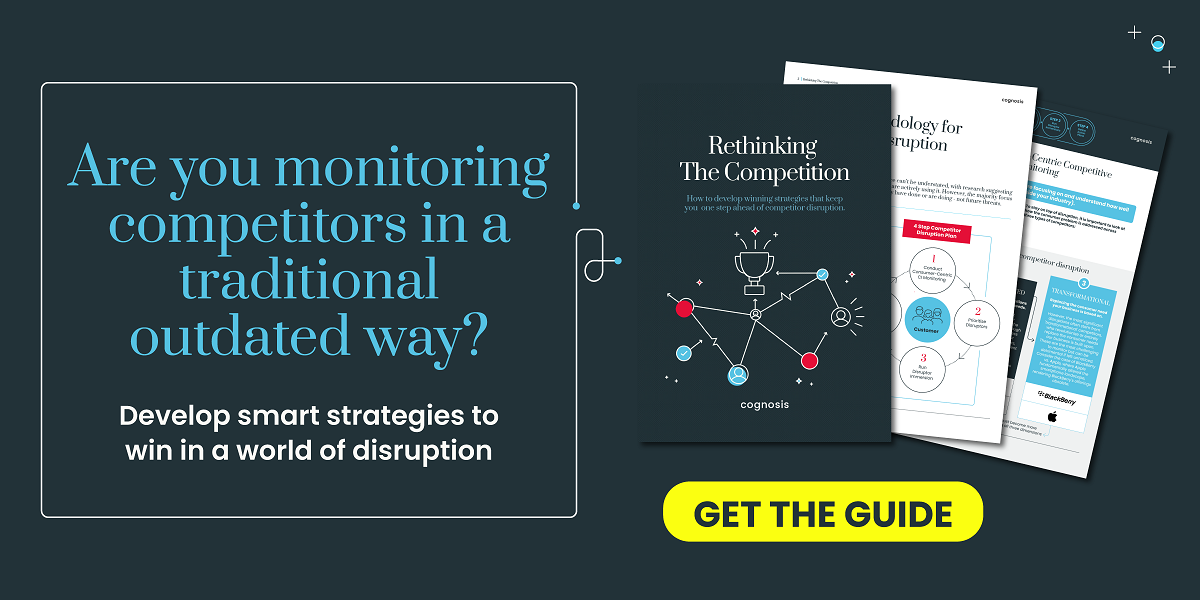Using business wargaming to achieve competitive advantage
Business wargaming is an excellent tool to anticipate and simulate your competitor's next move. Wargaming helps businesses focus on a key strategic issue and enables a business to take an external perspective to how competitors will react. This ultimately assists in creating more robust, adaptable and successful strategies capable of navigating even the most turbulent competitive landscapes.

Competitor intelligence is pointless – unless you put it to use.
Information on its own doesn’t change your course, but it should be used to inform your movements. So, how do you make the most of competitor insights and build a strategy that is fully equipped to adapt and respond to an increasingly disruptive and dynamic competitive landscape?
One answer is business wargaming – an excellent tool to anticipate and simulate your competitor’s next move.
> RELATED ARTICLE: Competitor Analysis Tools for Strategy Development
What is business wargaming?
Business wargaming is a strategic tool used by organisations to simulate competitive scenarios, test strategies, and analyse potential outcomes in a controlled and risk-free environment. The term draws its inspiration from military war games, where military commanders simulate various battle scenarios to develop and test their strategies. Businesses use it to anticipate, prepare for, and proactively respond to competitive manoeuvres.
Boiled down, wargaming enables you to strategise: ‘if that, then this’.
How does business wargaming work?
Wargaming helps businesses focus on a key strategic issue, like a big product launch, or a new entrant to the market. Running a wargame enables the business to take an external perspective to how competitors will react. And therefore, what the perfect counter moves need to be.
Wargaming helps businesses focus on a key strategic issue, like a big product launch, or a new entrant to the market. Running a wargame enables the business to take an external perspective to how competitors will react. And therefore, what the perfect counter moves need to be.
A key component of wargaming is stepping into the shoes of your competitors and making decisions from their perspective. The more you ‘live’ in this perspective, the more successful the exercise will be. Wargaming workshops can stretch anywhere from half a day to multiple days, depending on the wargame objectives and the type of wargame you are playing.
What are the benefits of business wargaming?
Wargaming is used in multiple industries, from FTSE100 market leaders through to high growth new ventures – whether you’re currently experiencing competitor disruption, looking to get ahead of future disruption, or even planning to be a disruptor yourself. For example:
- Those seeing an increase in the number of competitors in their category.
- Those feeling always ‘one step behind’ a specific competitor.
- Those anticipating an external change (e.g. new regulation) that might impact the competitive landscape.
- Those looking to launch a new product or proposition who would like to ‘stress test’ competitor reactions.
- Those needing to shake up employees’ mindsets through a new experience.
Multiple ways to play
There are different ways to structure the game. For example, you could run a rapid response wargame, in which multiple rounds (3 – 5) are played out with both competitor and own company perspectives. Players are split into groups representing each ‘side’. You may have more than one competitor you wish to scenario play, in which case there is more complexity and groups within the game. In this type of game, you run through specific scenarios and the interim results drive future moves. This helps develop a greater understanding of the impact of shorter-term tactics.
The wargame we facilitate the most and often recommend to our clients is a strategic wargame. Rather than multiple short rounds, you spend the first half of the game in your competitors’ shoes, building out their strategy. You then spend the second half back in your own shoes, building robust response plans based on learnings from the first part of the game. This approach is useful for more longer-term strategic planning as teams spend time building out 1 – 3-year plans rather than short-term tactics. It also allows for deeper integration of the competitor learnings from the first part of the game.
The lens of the game can vary too, depending on the level of environmental and competitor uncertainty:
Know your enemy
For a wargame to be successful, it is critical that you have a solid understanding of the competitors you are role playing. Participants need competitor intelligence to allow them to accurately simulate the competition, including strategy, financials and performance, organisational culture and decision-making style, as well as their marketing and sales strategies. This kind of information can be gathered from publicly available information – for example, end of year reports – as well as through expert analysis and appraisal. This research should be shared with the participants in advance of the session so they can prepare.
Playing the part
Business wargaming is not acting. You’re not asking your team to dress up or do anything that makes them feel uncomfortable. Having said that, it does require players to put themselves in their competitors’ shoes and ask themselves, is this how they would make decisions? What context are they bringing to decision making and how does it differ from your own? We often include a customised ‘cheat sheet’ to help guide participants on their competitors decision-making style and what KPI’s would guide their strategic priorities.
This activity can provide a good mental shake-up, and usually results in a lively and engaging workshop. People tap into the creative part of their brain in a way they wouldn’t if asked to complete a similar activity alone, at a desk. The results can bring about real change in business strategy.
If a company is interested in business wargaming, where do they start?
Wargaming only works if you have done the necessary preparation. We would recommend first unpacking the competitor challenge you have. Ensure you are clear on which competitors, categories and products are impacted and what the overall objective is. This will help you define the lens of the wargame. For example, does it make sense to run the wargame across multiple categories or to focus on a particular brand? Would it be better to zone in on one territory or market? Would a test or landscape game be more appropriate?
You don’t have to do this alone. You can bring in an experienced third-party to build the depth of competitor insight required to make wargaming productive and successful. Or, if you invest in a wargaming expert, they can design the agenda, prepare the materials and facilitate the workshop for you.
Why wargaming works
An effective wargaming programme can help you understand your competitor at a deeper level. A powerful combination of focused insight and disruptive techniques can help businesses better prepare for competitive attacks. It helps build more robust, adaptable and ultimately successful strategies capable of navigating even the most turbulent competitive landscapes.
> RELATED RESEARCH: Discover how you can drive long-term growth for your business


